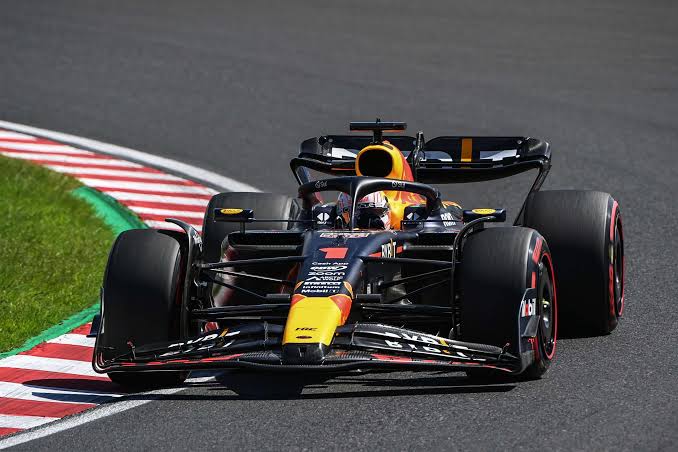this the best F1 spot car it can move as fast as possible

Formula 1, the pinnacle of motorsport, has long captivated fans with its high-speed action, precision, and cutting-edge technology. When it comes to the fastest cars on the planet, the F1 race cars stand out for their ability to move at mind-boggling speeds. In this article, we’ll explore what makes the best F1 car so fast and what technology drives this high-speed wonde
An F1 car is designed with one key objective: speed. Every component of the car, from its aerodynamics to the engine, is finely tuned to maximize performance on the track. The current F1 cars are capable of speeds exceeding 230 mph (370 km/h), but it’s not just the top speed that matters. It’s the car’s acceleration, agility, and ability to handle corners at incredible speeds that separate the best from the r
One of the most critical factors contributing to the speed of an F1 car is its aerodynamics. F1 cars are equipped with advanced aerodynamics packages, including front and rear wings, sidepods, and diffusers, all of which work in unison to create downforce. Downforce is essential because it increases tire grip, allowing the car to corner at higher speeds without losing traction. The smoother the airflow, the less drag, and the faster the car can go.
In addition, the use of active aerodynamics allows for adjustments to the car’s aerodynamics depending on the track or conditions, providing an added edge in performance. Teams like Mercedes, Red Bull Racing, and Ferrari constantly push the envelope with innovative aerodynamic solutions to give their cars a competitive advantage.
At the heart of every F1 car is its engine. In the current F1 era, hybrid power units combine a turbocharged 1.6-liter V6 engine with an Energy Recovery System (ERS), which captures energy from braking and exhaust heat to provide an extra boost of power. These engines produce around 1,000 horsepower, providing the raw power needed to accelerate from 0 to 60 mph in just under 2 seconds.
Not only is the power crucial, but the way the engine is tuned also plays a significant role. Teams work closely with engine suppliers, such as Mercedes, Ferrari, Honda, and Renault, to ensure that the engine provides optimal performance under various conditions, from cold mornings to blistering heat.
Even the best car can’t reach its potential without proper grip. The tires used in F1 are specially designed to provide maximum performance in different conditions. From soft tires that offer high grip in dry conditions to hard compounds for endurance and wet-weather tires for rain, each tire is made to optimize traction and stability.
The teams closely monitor tire temperatures and wear during races, as the grip can fluctuate based on how the tires are used. Engineers use advanced data analysis to predict tire degradation, giving drivers the ability to manage their cars’ performance over the course of a race.
While power and aerodynamics are essential for speed, handling is just as important. The best F1 cars are built with ultra-lightweight carbon fiber chassis, designed to provide maximum strength while keeping the car as light as possible. The low weight, combined with a balanced weight distribution, allows for precise handling, helping drivers navigate sharp corners with remarkable control.
The suspension systems are equally sophisticated, with adjustable setups tailored for each race and track. Whether it’s a bumpy street circuit or a smooth, high-speed track like Monza, the suspension ensures that the car maintains stability and balance throughout the ra
Formula 1 is one of the most data-driven sports in the world. Teams collect thousands of data points every second during a race, monitoring everything from tire pressure and fuel consumption to engine performance and aerodynamics. This information is sent in real-time to the pit crew, who adjust strategies, optimize tire usage, and provide feedback to the driver.
Moreover, the digital aspect of modern F1 cars includes systems like the Kinetic Energy Recovery System (KERS) and sophisticated braking technology that allow the car to not only be faster but more efficient. The combination of power and efficiency gives the best F1 cars a huge advantage, as they can sustain high speeds while preserving crucial resources during a r
As technology evolves, the future of F1 cars may see a shift toward fully electric powertrains or hybrid systems that are even more efficient and powerful. Innovations in battery technology and energy recovery systems promise to push the boundaries of what’s possible in speed and performance. We may even see F1 cars reach speeds that were once considered impossible.
### **Conclusion**
The best F1 cars are far more than just fast machines; they are a complex mix of engineering, technology, and human skill that work together in perfect harmony. From their aerodynamic designs to the powerful hybrid engines, precision handling, and real-time data analysis, these cars represent the ultimate in high-speed performance. Whether racing on a flat-out circuit or negotiating tight corners, the best F1 cars move with speed that seems almost supernatural, making them the fastest cars on the planet.

 :Former Indiana head coach Mike Woodson hired to join Sacramento Kings returns to the NBA after coaching the Indiana Hoosiers from 2021-2025
:Former Indiana head coach Mike Woodson hired to join Sacramento Kings returns to the NBA after coaching the Indiana Hoosiers from 2021-2025



